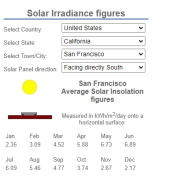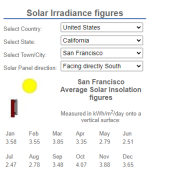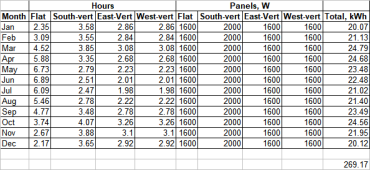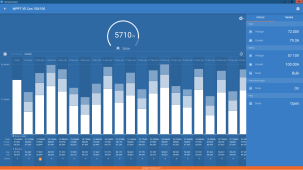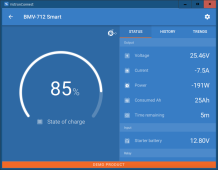再生可能 エネルギー
New Member
- Joined
- Nov 28, 2019
- Messages
- 261
I need some help to estimate a possible Solar energy with only vertically or horizontally mounted solar panels.
I have a flat roof and because of heavy wind situation, I cannot have my panels tilted, unless I design a very strong frame support.
So practically my solar panels can only be installed vertically against a wall or flat on top of the roof.
I plan to have may be 12 to 16 panels, but I don't have enough space to put all the panels in one location,
such as only horizontally or vertically toward the south.
The walls are oriented exactly toward the East, South, and West,
and about the latitude, I am located near San Francisco, California.
1) How can I calculate the expected solar energy for each hour of the day, for every month of the year,
and for each of the four possible panel locations, such as horizontal or vertical toward east, south, and west?
2) If hypothetically I have a total of 16 panels, and 4 panels for each of the 4 possible locations,
what would be the optimum connection combination, such as:
- Connect in series all the panels of a given location, for example only the 4 west panels together,
and use then 4 independent inverters for each of the locations to charge the batteries?
- Connect in series one of each type of location, such as one horizontal, one east, one south, and one east,
so in average I would have almost a constant level of solar energy, and use 4 independent inverters for each of the panel sets?
- Would it be preferable to use only one or two inverters and have the panels connected together in series and parallel?
I have a flat roof and because of heavy wind situation, I cannot have my panels tilted, unless I design a very strong frame support.
So practically my solar panels can only be installed vertically against a wall or flat on top of the roof.
I plan to have may be 12 to 16 panels, but I don't have enough space to put all the panels in one location,
such as only horizontally or vertically toward the south.
The walls are oriented exactly toward the East, South, and West,
and about the latitude, I am located near San Francisco, California.
1) How can I calculate the expected solar energy for each hour of the day, for every month of the year,
and for each of the four possible panel locations, such as horizontal or vertical toward east, south, and west?
2) If hypothetically I have a total of 16 panels, and 4 panels for each of the 4 possible locations,
what would be the optimum connection combination, such as:
- Connect in series all the panels of a given location, for example only the 4 west panels together,
and use then 4 independent inverters for each of the locations to charge the batteries?
- Connect in series one of each type of location, such as one horizontal, one east, one south, and one east,
so in average I would have almost a constant level of solar energy, and use 4 independent inverters for each of the panel sets?
- Would it be preferable to use only one or two inverters and have the panels connected together in series and parallel?




